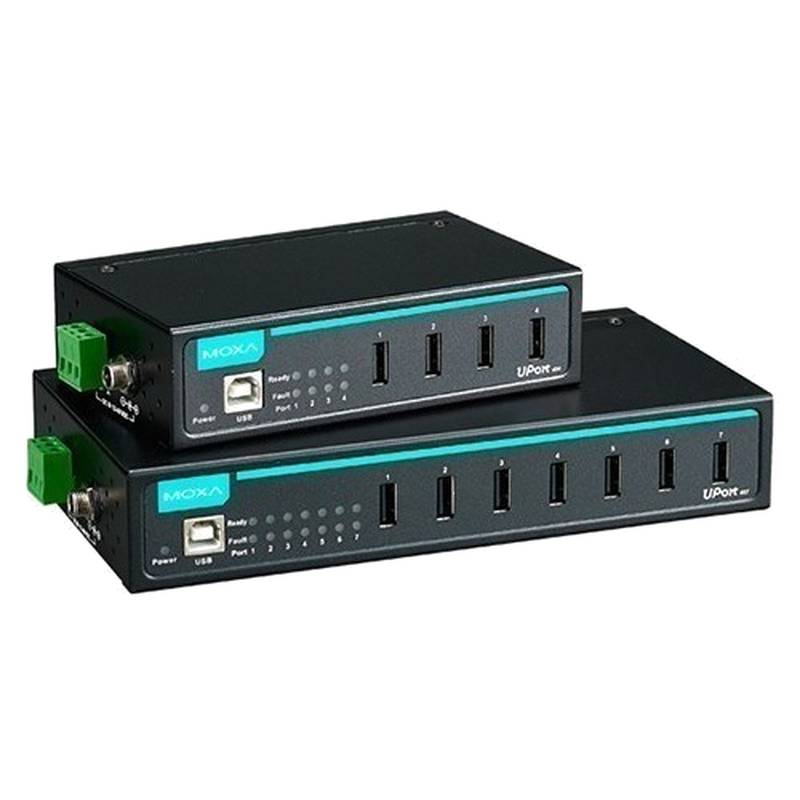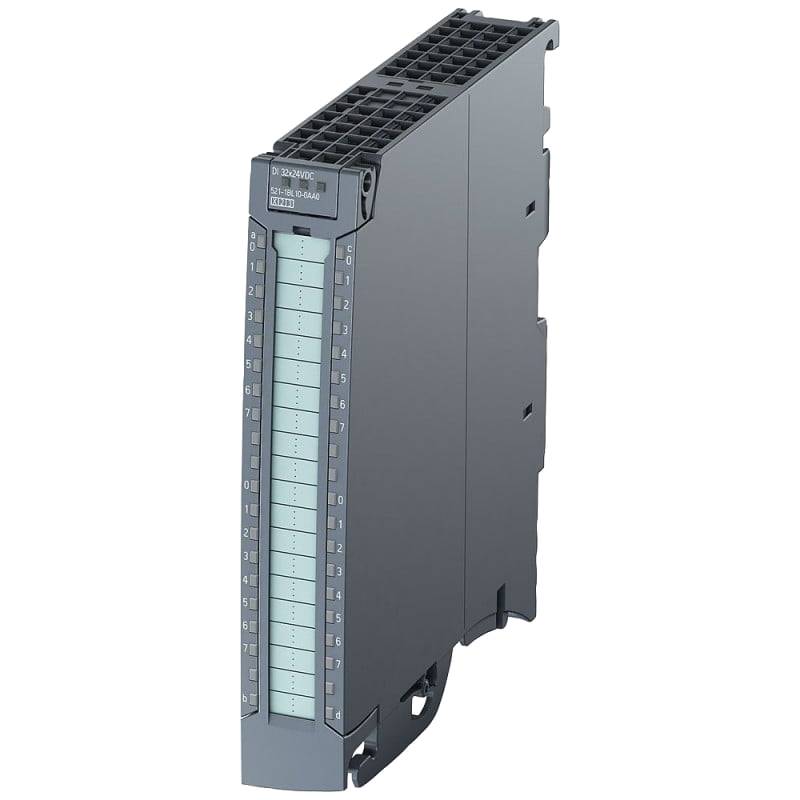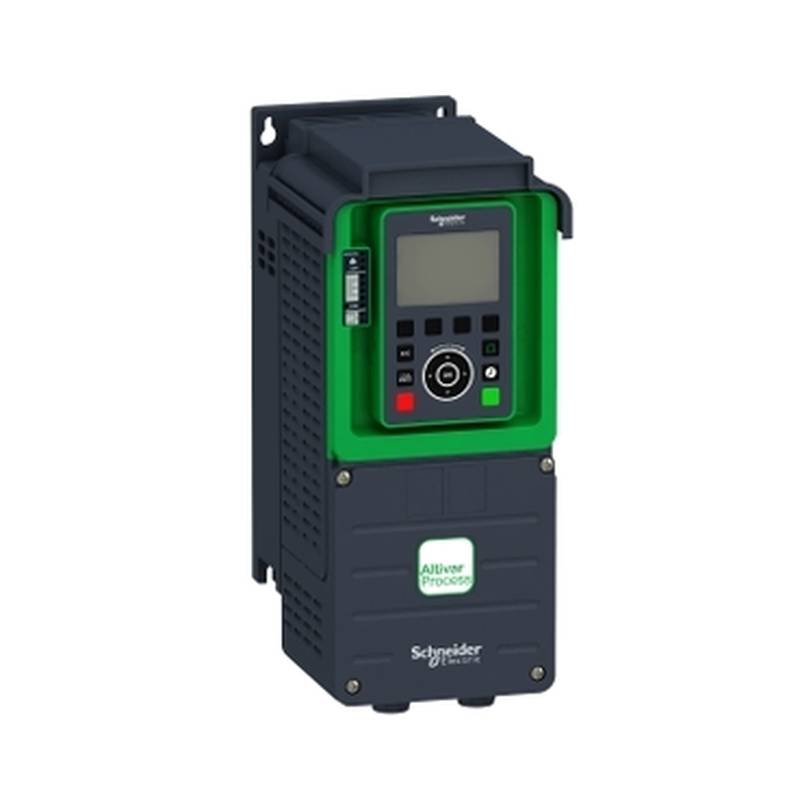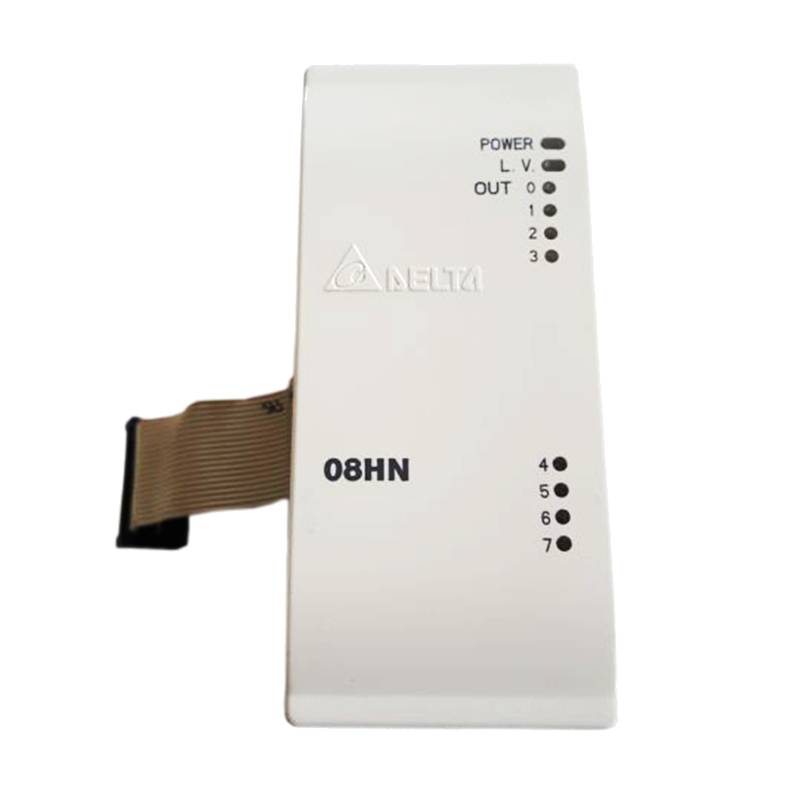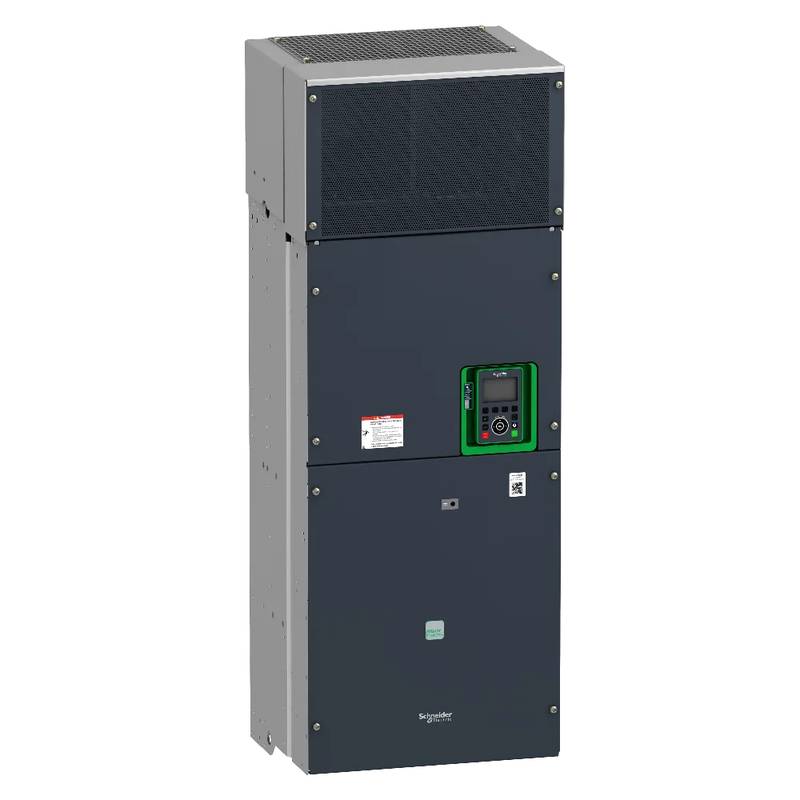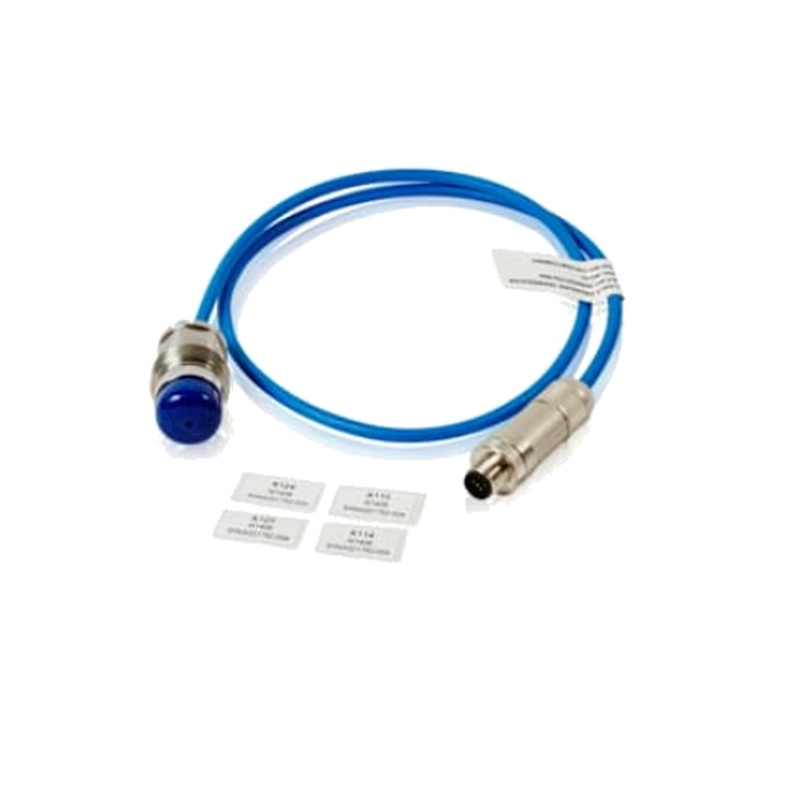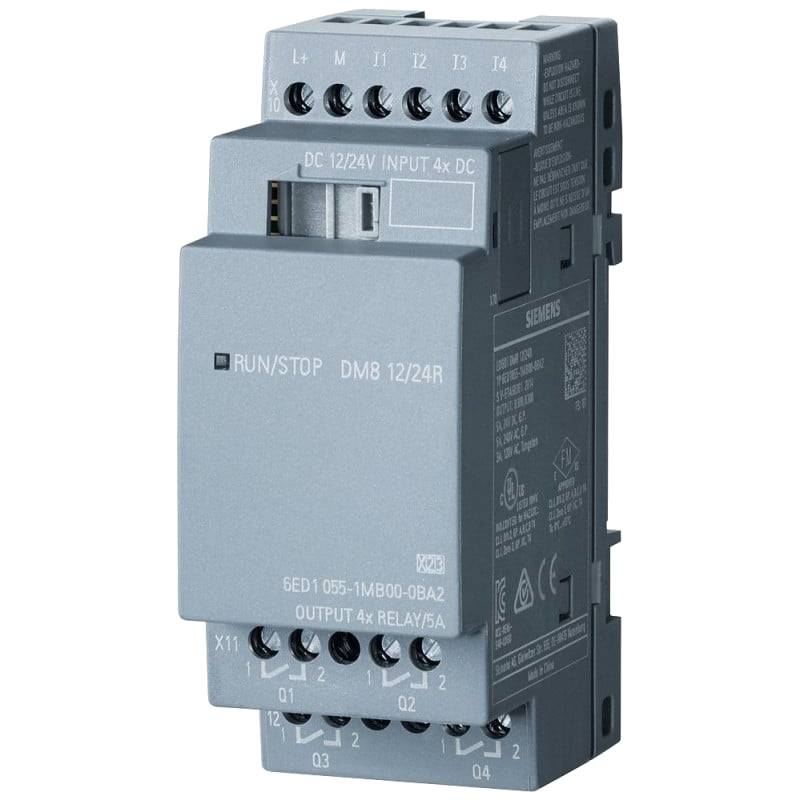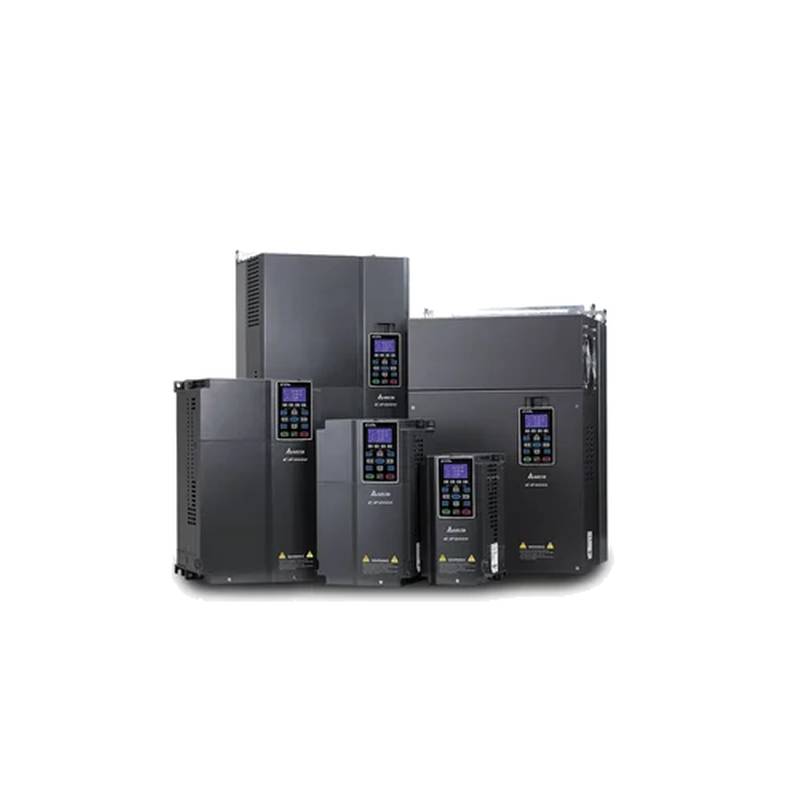
The Moxa UPort 407 is a compact serial device server and converter engineered for robust industrial communication, offering unparalleled reliability and flexibility. This device excels in connecting legacy serial devices to modern Ethernet networks, simplifying industrial automation and data acquisition. Key advantages include its industrial-grade design, support for multiple serial interfaces, and effortless integration into existing infrastructure. Technical parameters highlight its operational excellence: it features 4 RS-232/422/485 serial ports, 10/100 Mbps Ethernet connectivity, a wide operating temperature range of -40 to 75°C, and a rugged metal housing.
Product Specifications
| Feature | Specification |
| :---------------------- | :------------------------------------------ |
| Serial Ports | 4 x RS-232/422/485 |
| Ethernet Port | 1 x 10/100 Mbps Ethernet |
| Serial Interface Speed | Up to 921.6 kbps |
| Operating Temperature | -40 to 75°C |
| Power Input | 12-48 VDC |
| Mounting | DIN-rail, Wall-mount |
| Dimensions | 125 x 106 x 37 mm |
| Protocol Support | TCP Server/Client, UDP Server/Client, Pair Connection |
| Warranty | 5 years |
Core Features & Market Positioning
The Moxa UPort 407 distinguishes itself through its robust industrial design and versatile serial port configuration, supporting RS-232, RS-422, and RS-485 simultaneously. This adaptability allows it to interface with a vast array of serial devices, from PLCs and sensors to older diagnostic equipment. Its compact form factor and DIN-rail mounting capability make it ideal for space-constrained control cabinets, while its extended operating temperature range ensures dependable performance in harsh environments. Moxa's reputation for industrial-grade reliability positions the UPort 407 as a leading solution for mission-critical applications where network stability and data integrity are paramount. The device server functionality effectively bridges serial communication protocols to Ethernet, enabling remote monitoring and management of industrial assets.
Key Application Scenarios
The UPort 407 is instrumental in various industrial automation settings. In manufacturing, it facilitates the integration of legacy machinery with modern SCADA systems, enabling real-time production data collection and control. For utilities, it supports remote terminal units (RTUs) and smart meters, allowing for efficient grid monitoring and management over Ethernet. In transportation, it can be deployed in traffic control systems or railway signaling to connect serial-based sensors and controllers to central networks. Furthermore, its versatility makes it suitable for building automation, where it can manage HVAC systems, security devices, and access control panels. The ability to convert serial data to IP packets simplifies network expansion and reduces cabling complexity.
Practical System Integration Guidance
Integrating the Moxa UPort 407 into an industrial network is straightforward. Installation typically involves mounting the device on a DIN-rail or wall, connecting power (12-48 VDC), and establishing an Ethernet connection. Serial port configuration, including baud rate, data bits, parity, and stop bits, is managed through Moxa's Windows utility or web interface. For network connectivity, users can configure TCP server, TCP client, UDP, or pair connection modes to suit their application requirements. The device supports standard networking protocols, ensuring compatibility with existing IT infrastructure. Proper wiring of the serial ports is crucial; ensuring correct pinouts for RS-232, RS-422, or RS-485, along with appropriate termination for RS-485 if necessary, guarantees reliable communication.
Operation and Risk Mitigation
Operating the Moxa UPort 407 involves careful attention to network and serial configurations to ensure optimal performance and security. To mitigate risks, it's essential to implement network segmentation where possible and restrict access to the device's management interface. Regular firmware updates from Moxa are recommended to address potential vulnerabilities. Troubleshooting common issues, such as intermittent connectivity or data errors, often involves verifying serial parameters (baud rate, parity, etc.) match between the UPort 407 and connected devices, checking physical cable integrity, and confirming correct network IP address and port configurations. The device's robust design inherently minimizes hardware failure risks, but environmental factors like power surges should be managed with appropriate surge protection.
Scalability & Long-Term Value
The Moxa UPort 407 offers significant scalability and long-term value for industrial networks. Its ability to support up to four serial devices per unit reduces the need for multiple network interface cards or gateways. As IIoT (Industrial Internet of Things) adoption grows, the UPort 407 provides a critical bridge, enabling older serial-based equipment to participate in digital transformation initiatives. Its compatibility with Moxa's broader portfolio of industrial networking solutions allows for phased upgrades and seamless integration into more complex systems. The 5-year warranty underscores Moxa's commitment to product longevity and reliability, ensuring a reduced total cost of ownership over the device's operational lifespan.
Frequently Asked Questions
What are the primary communication protocols supported by the Moxa UPort 407?
The Moxa UPort 407 supports essential industrial Ethernet communication protocols, enabling versatile connectivity. It functions as a TCP server, allowing devices to connect to it, or as a TCP client, initiating connections to a remote server.
It also offers UDP server and client modes for connectionless communication, ideal for certain data broadcasting scenarios. A key feature is its "Pair Connection" mode, which establishes a transparent serial-to-serial link over Ethernet, simplifying legacy device integration.
These protocols ensure that the UPort 407 can adapt to a wide range of network architectures and application requirements, facilitating seamless data exchange between serial devices and Ethernet networks.
How does the UPort 407 handle different serial interface types like RS-232, RS-422, and RS-485?
The UPort 407 features auto-sensing serial ports, automatically detecting and configuring for RS-232, RS-422, or RS-485 signals. This eliminates the need for manual DIP switch settings or physical reconfigurations for each serial type.
Users can configure the specific protocol for each port via Moxa's utility software or web interface, allowing for mixed-signal environments within a single device. This flexibility is crucial for integrating diverse industrial equipment with varying serial communication needs.
For RS-485, the device supports 2-wire and 4-wire modes, and it automatically handles data direction control, simplifying integration with devices that require this feature for half-duplex communication.
What are the typical power requirements and environmental considerations for installing the UPort 407?
The Moxa UPort 407 operates on a wide DC voltage input range, typically from 12 to 48 VDC. This broad range makes it compatible with various industrial power supplies and ensures flexibility in different electrical environments.
It is designed for demanding industrial conditions, featuring an extended operating temperature range from -40°C to 75°C. This allows for reliable operation in extreme hot or cold locations, such as outdoor enclosures or unconditioned factory floors.
The device also boasts a rugged metal housing and DIN-rail mounting capabilities, enhancing its durability and ease of installation in control cabinets, ensuring secure and stable deployment in vibration-prone industrial settings.
Can the UPort 407 be managed remotely, and what are the security features?
Yes, the UPort 407 supports remote management through its web-based interface and Moxa's device management software. This allows administrators to configure, monitor, and troubleshoot the device from anywhere on the network.
Security is enhanced through password protection for the management interface, preventing unauthorized access to device settings and configurations. Network isolation and proper firewall rules should also be implemented to further secure the device.
Regular firmware updates are available from Moxa, which can include security patches and performance enhancements, ensuring the device remains secure and up-to-date against evolving threats.
What is the maximum serial data rate achievable with the Moxa UPort 407?
The Moxa UPort 407 supports high serial data rates, reaching up to 921.6 kbps on its RS-232/422/485 ports. This speed is crucial for applications requiring rapid data transfer between serial devices and the network.
Achieving these maximum speeds depends on the specific serial interface type, cable length, and the capabilities of the connected serial devices. Proper termination and shielding are recommended for longer cable runs or in noisy environments to maintain signal integrity.
This high data throughput ensures that the device server can handle demanding industrial communication tasks without becoming a bottleneck, facilitating efficient data acquisition and control.
How is the Moxa UPort 407 installed and configured for basic network connectivity?
Installation typically involves mounting the UPort 407 onto a DIN-rail or a wall using the provided brackets. Then, connect the Ethernet port to your network switch and the serial ports to your legacy devices using appropriate serial cables.
Power is supplied via the terminal block, accepting 12-48 VDC. Initial configuration, including setting the IP address, subnet mask, and gateway, can be done using Moxa's Windows-based utility software or by accessing the device's default IP address via a direct Ethernet connection.
Once network parameters are set, users can access the device's web interface to configure serial port settings (baud rate, parity, etc.) and choose the desired communication mode (TCP server, client, UDP, etc.).
What are the benefits of using a compact serial device server like the UPort 407 in industrial settings?
Compact serial device servers like the UPort 407 are essential for modernizing legacy industrial equipment. They enable older serial devices to communicate over modern Ethernet networks, extending their operational life and integrating them into digital control systems.
The compact form factor saves valuable space in control cabinets, which are often densely populated. This allows for more equipment to be installed in the same footprint, optimizing cabinet design and reducing overall system size.
Furthermore, by converting serial to Ethernet, these devices simplify cabling infrastructure, reducing installation costs and maintenance efforts associated with extensive serial cable runs.
Does the UPort 407 require specific drivers for different operating systems?
The UPort 407 itself does not typically require specific drivers on the host operating system for its core device server functionality. Its operation relies on standard TCP/IP networking protocols.
However, if you intend to use the device as a virtual COM port on a PC (e.g., for configuration or specific applications that require serial port access), then Moxa provides Windows drivers for this purpose. These drivers create virtual serial ports on your PC that map to the UPort 407's physical ports.
Always refer to the latest documentation from Moxa for the most up-to-date driver information and compatibility with various operating system versions.
What is the typical lifespan and warranty period for the Moxa UPort 407?
Moxa products, including the UPort 407, are known for their industrial-grade durability and are built for long-term operation in challenging environments. The expected lifespan is generally many years, often exceeding 10 years, due to robust component selection and design.
The Moxa UPort 407 typically comes with a 5-year product warranty. This warranty covers defects in materials and workmanship under normal use and operating conditions.
This extended warranty period provides customers with confidence in the product's reliability and significantly reduces the total cost of ownership over the device's lifecycle.
How does the UPort 407 contribute to Industrial IoT (IIoT) strategies?
The UPort 407 acts as a crucial enabler for IIoT by providing a seamless bridge between existing serial-based industrial equipment and modern IP-based networks. This allows legacy assets, which are often the backbone of operations, to be connected and monitored digitally.
By converting serial data to Ethernet packets, the UPort 407 makes this data accessible for collection, analysis, and action through cloud platforms or SCADA systems. This facilitates remote monitoring, predictive maintenance, and process optimization, core components of IIoT.
Its robust design and industrial certifications ensure reliable data transmission even in harsh environments, making it suitable for deploying IIoT solutions across diverse industrial sectors.














